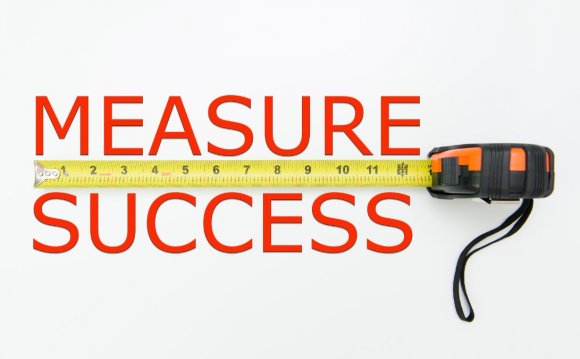
- It provides a road map for your business.
- It helps you obtain outside financing.
If you're going into business for yourself, you must have a business plan - period. Numerous studies have shown that one of the major reasons new businesses fail is poor planning. (Many people want to start a business, but not everyone has what it takes to succeed. Learn more in )
The good news is that developing a business plan is not as hard as it seems. In order to develop a solid business plan, you need to have a thorough understanding of the business you're entering. Next, you need to determine how you'll use the plan and who your target audience is. Finally, you should create a complete a business plan that is comprehensive and concisely written. We'll explore each of these steps in detail.
Step 1: Know Your Business
In order to prepare a business plan, you must know the business you are entering inside and out. This means lots of research. Research comes in two forms: reading everything you can about the industry and talking to those who are already in it. Learn everything you can about your business and industry.
Step 2: Determine Your Purposes for the Plan
A business plan serves to crystallize your business vision and guide you in fulfilling that vision; it is also frequently used to entice potential investors.
If you are self-financing your business, you design the plan mostly for your benefit, but if you're seeking outside investors, you'll need to target them. As such, before you create your plan, determine whether you will solicit outside investors.
Step 3: Determine Your Audience
If you plan to recruit investors, you need to build a plan to suit them. Outside investors, who range from friends and family members to banks and venture capitalists, will invest through either loaning you the money, buying shares in your company or some combination of the two. Determine their level of sophistication and what they are looking for in a potential business investment. Remember that regardless of their level of sophistication, they are all looking for four things:
- Trust in you - You build trust by demonstrating ethics and integrity, so your business plan should demonstrate those qualities. (Read for more on gaining a reputation for integrity.)
- Understanding of the business - It is your job to clearly articulate your mission statement, your product offerings and how you will make money. Your may have to tailor your plan to suit your audience: less-sophisticated investors may be scared off by industry jargon, while investment professionals will probably expect it. (Read for further reading on how businesses make their money.)
- Financial confidence - Clearly articulate the risks of investing in your business. Also, show investors how they can recoup their money - whether your venture succeeds or fails. (Learn how venture capitalists make their money in .)
- A good return on investment - Over the period of 1928-2007, the geometric (exponential) return for stocks was 9.8%, while for 10-year Treasury bonds, it was 5%. Historical private-equity returns are more difficult to measure, but, in general, investors will expect a premium of anywhere from 2-5% over public-equity market returns. The return on equity for your new business must be in the private-equity range. (For related reading, see .)
Typically, investors will look to beat a certain internal rate of return. Your job is to make sure your projected returns are in line with those of similar industries. (For related reading, see .)
Step 4: Create Your Business Plan
First, develop an outline of your business plan. Consider every aspect of your business and how it will affect your business plan. Remember, this business plan is a road map. It must guide you. It must also communicate to investors what you're doing and why they should invest with you.
The order in which your plan is presented should be something like the following:
- Mission Statement
- Executive Summary
- Product or Service Offerings
- Target Market
- Industry and Competitive Analysis
- Resumes of the Company Principals
- Your Offering (what type of financing you're seeking)
- Appendix (any other pertinent information)
You'll probably also want to note any personal seed capital you're investing in the venture. Financiers want (and often require) entrepreneurs to put their own funds in the venture, and the greater the portion you invest relative to your net worth, the better.
Now let's review each section of the business plan in detail.
1. Mission Statement
The mission statement is a concise, one- to three-paragraph description of your business objectives, or your business's guiding principles. In this section, you should state your unique selling point, or what separates your company from all the others in the industry that are otherwise just like it.
2. Executive Summary
This is a one- to two-page summary of your business. Potential investors will read this to decide whether they want to look at the rest of your plan.
3. Product or Service Offering
Create a section describing your product or service offerings in detail, as well as how much you'll charge for what you're selling.
4. Target MarketPresent your primary and secondary target markets, along with any research that demonstrates how your target market will benefit from and consequently purchase what you're offering.
5. Marketing Plan
Present your marketing plan, which should show in detail how you'll reach your target market. This part of the plan will include advertising and promotional strategies. (Read to learn more about the importance of good advertising.)
6. Industry and Competitive Analysis
Include a complete and thorough industry and competitive analysis that includes all stakeholders in your business. Don't forget to include governmental and regulatory agencies. (Read to learn the importance of being different from the pack.)
7. Financial Statements
These must be complete, accurate and thorough. Each number on your spreadsheets must mean something. Don't estimate payroll, for instance; determine what it will actually be. Your income statement must reconcile to your cash flow statement, which reconciles to your balance sheet. Your balance sheet must balance at the end of every period. You must have supporting schedules (e.g., depreciation and amortization schedules) to back up your projections. (To learn more about what investors will be looking for, see and .)
If you are having trouble building your pro-forma financial models, which should project out for at least five years, seek outside help from a qualified professional. (Learn how to ensure that your business stays afloat in Six Steps To A Better Business Budget.)
Use realistic projections. In estimating the growth of your business, you will make certain assumptions, which should be based on thorough industry research combined with a strategy for how you'll compete. Also, analyze how quickly you'll achieve positive cash flow. Investors vary in their standards, but most like to see positive cash flow within the first year of operation, particularly if this if your first venture.
In order for your projections to be accurate, you must know your business. If you've built an accurate and realistic model, but still project negative cash flow for more than 12 months, rethink your business model. (For related reading, see .)
8. Resumes of Company Principals
Include the bios and professional backgrounds of all significant employees of your business. You will want to emphasize how their backgrounds have prepared them to take on the challenge of running your new startup. Also, if an employee's business background is in a significantly different industry, you might want to emphasize how this can be an advantage instead of a detriment. (Read more in .)
INTERESTING VIDEO














